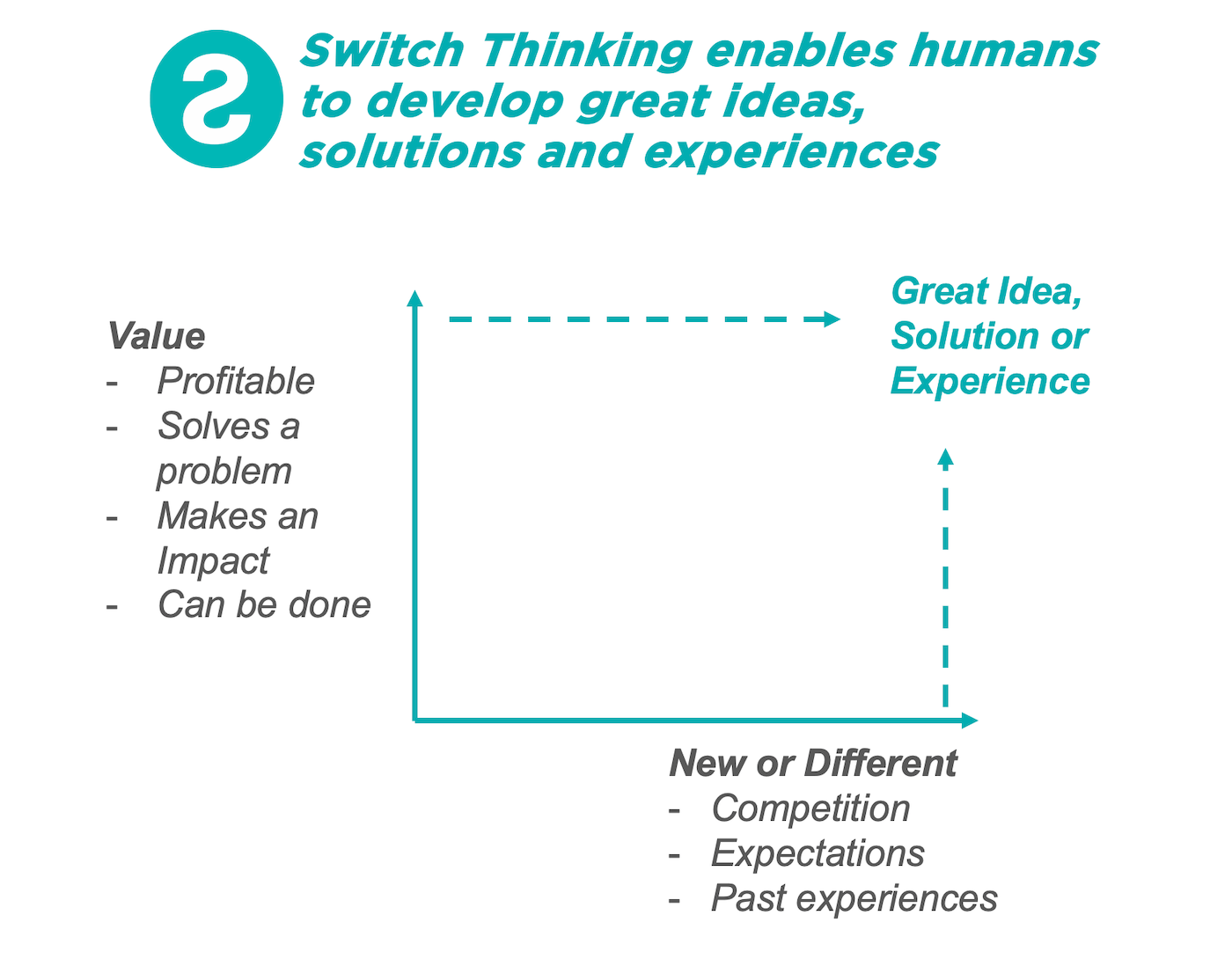How do you and your team create great ideas, solutions and experiences?
It seems such a simple question.
Customers, clients and employees want great ideas so you would expect we would become adept and generating these.
But in my experience this is not the case.
So lets’s start with what is a great idea, solution, opportunity or experience?
I believe there are two dimensions to a great idea:
- It has to be valuable in some way for a specific group (e.g. customers, employees, shareholders).
It should solve a problem, save time, energy or money for example.
It should be doable and (ideally) profitable.
2. On the other hand a great idea has to be in some way new or different.
Let’s be clear it is not a great idea if it’s the same as the competition or what you have always done.
There should be something surprising or unexpected about the idea, solution or experience.
It has to not only solve a problem for example but do this in a new or different way.
Here is another key point:
A great idea is decided by the customer, client or say the employee.
Not by the producer of the idea.
Ideally you want the customer to say ‘what a great idea.’
So now we know what a great idea, solution or experience is (i.e. something that is valuable and new or different as defined by the customer).
How do you create these great ideas – on demand!
There are a number of strategies humans can do.
- Wait for a random event to occur. It could be a chance comment by a customer for example.
- Or jump in the shower and hope a new idea emerges.
- Perhaps study the competition.
- Or run a team brainstorming session.
All these strategies can work but they take time and rely on chance.
There is another way.
I call it Switch Thinking.
Switch Thinking as the name implies is the deliberate and conscious attempt to change to a different way of thinking.
From what I call the usual (i.e. what is established and frequently used) to a different thinking path.
It’s like a jump to a new, less travelled thinking path.
This can be achieved by the use of what I call Switches.
There are 6 Switches – these are:
- Switch Perspective
- Switch the Problem
- Switch the Outcome
- Switch the Focus
- Switch the Questions and/or
- Switch the Rules (e.g. assumptions, conventions etc).
You and your team can use any of these switches in any order.
By using any of the 6 Switches it enables your team to generate great ideas.
Why?
With Switch Thinking you start by generating your usual ideas (I call this Box Thinking).
Then you use say Switch Perspective (e.g. how might a busker look at this situation?).
This switch opens up your thinking and you can create some different ideas (I call this Ball Thinking – it’s fun, playful etc).
Then you try and connect the grounded box ideas with the surprising ball ones to generate some great ideas!
There is no complete guarantee of course but you dramatically increase your chances of developing some great ideas by using the Switch Thinking process and tool kit.
Best if all you can do it by yourself, in a team, whenever and where-ever you are and it only takes a few minutes.
Or you can have another shower!

